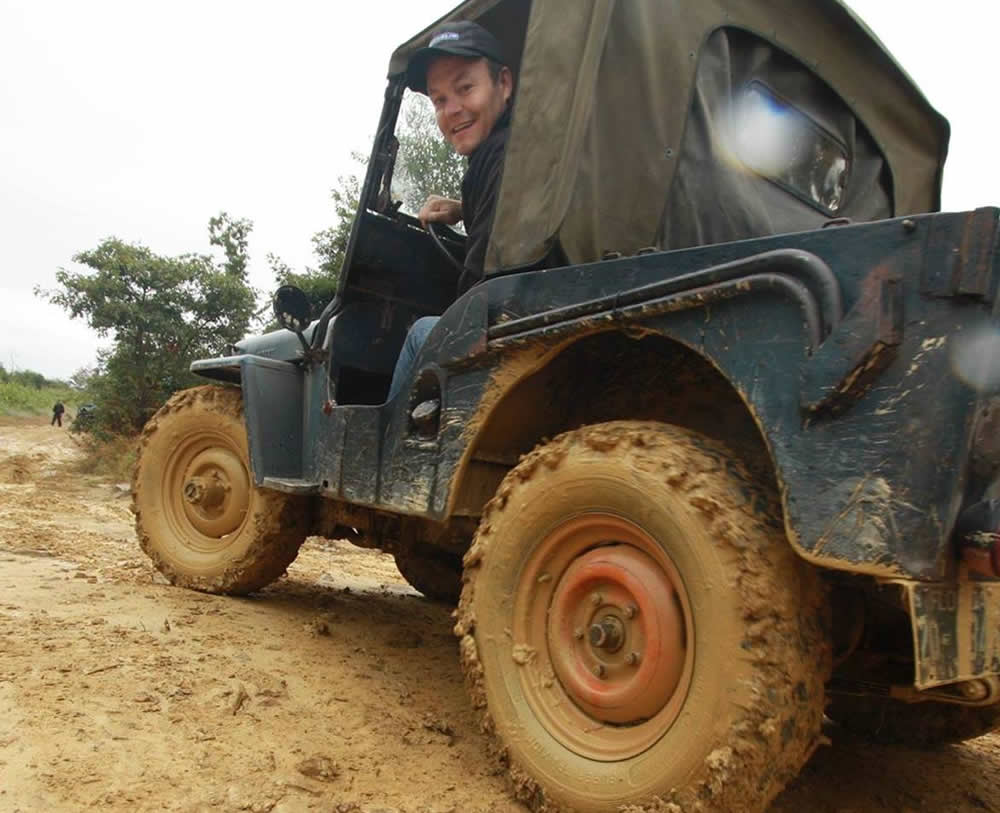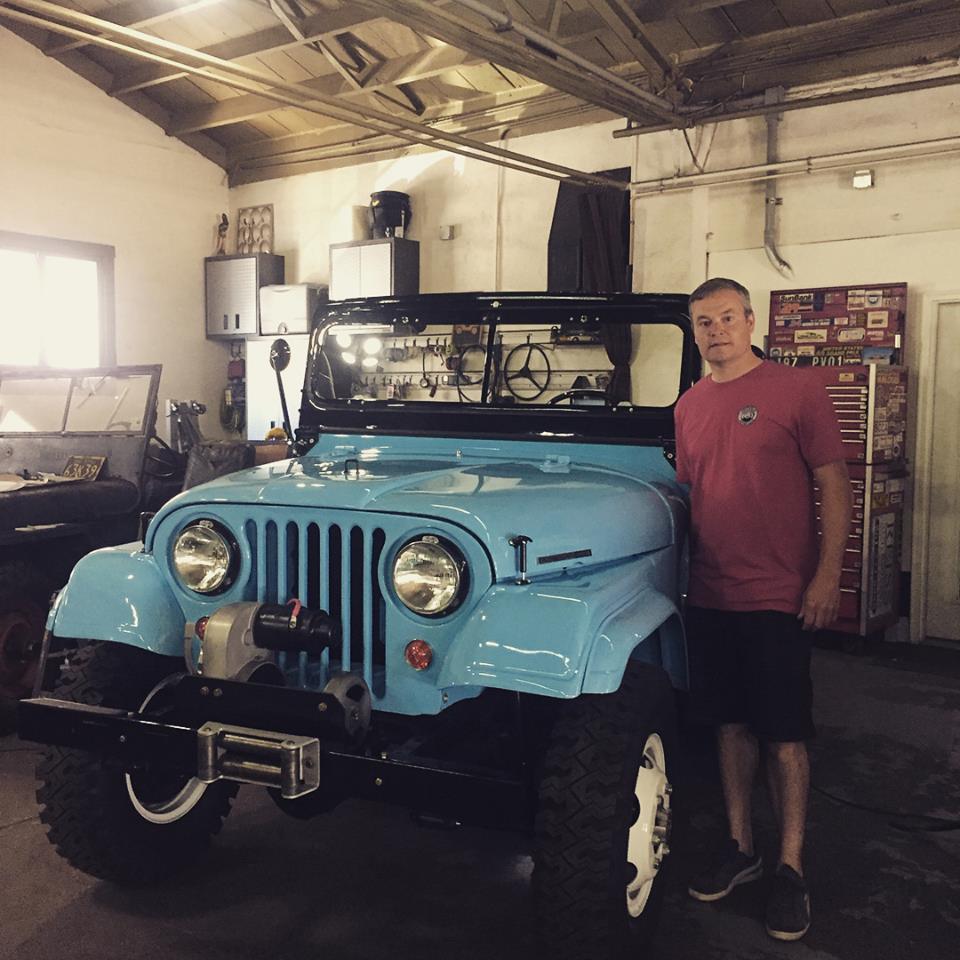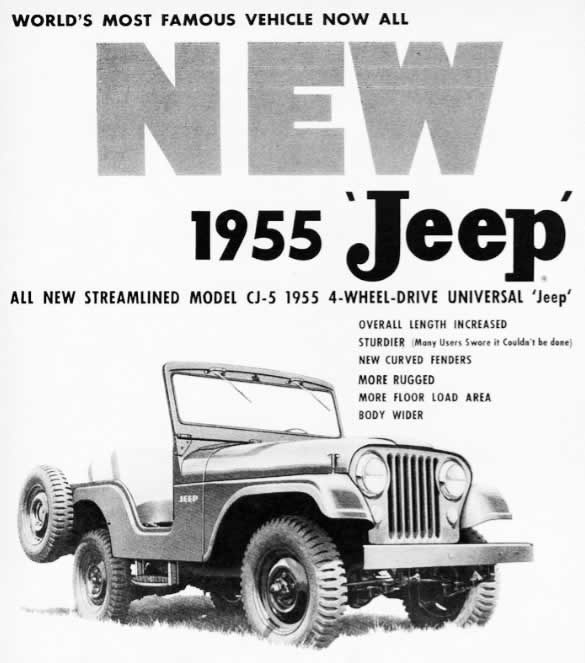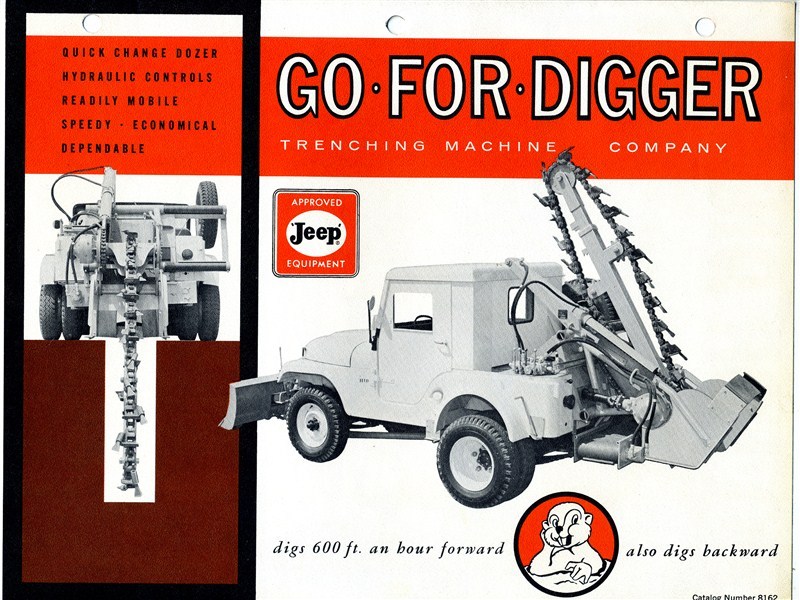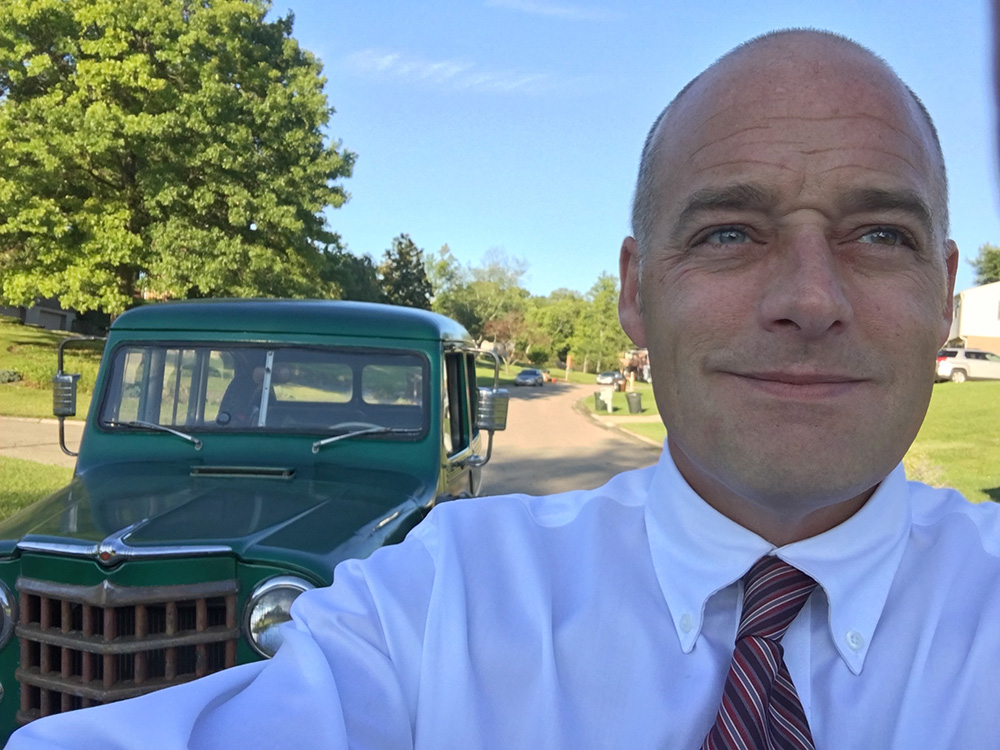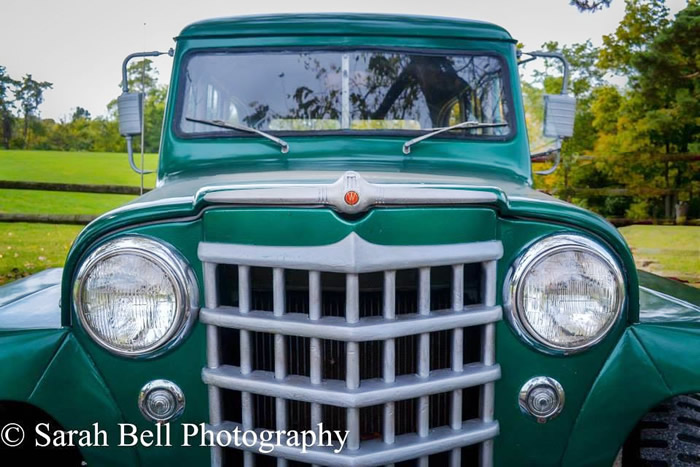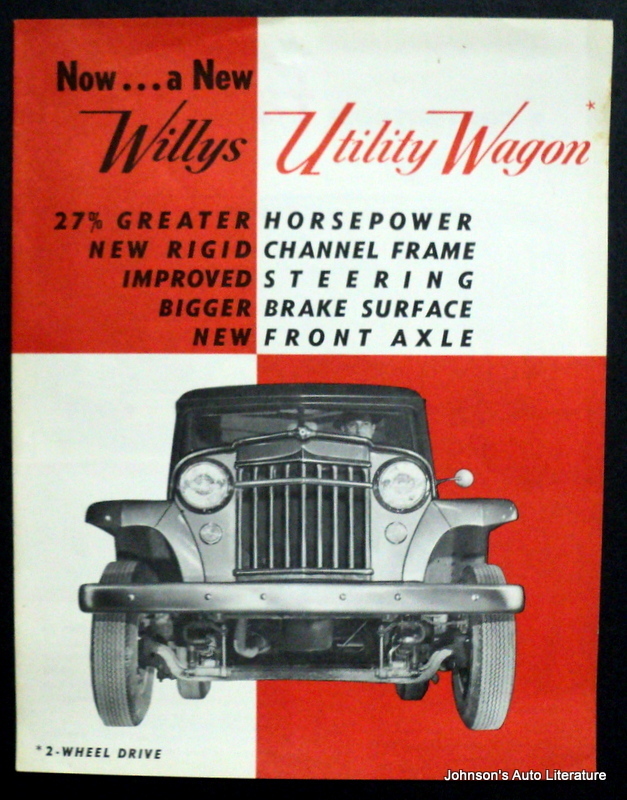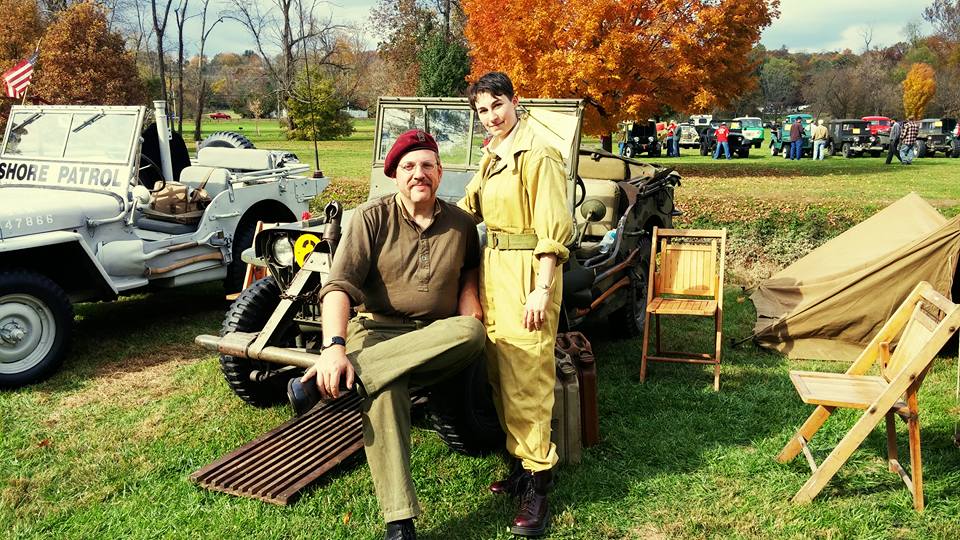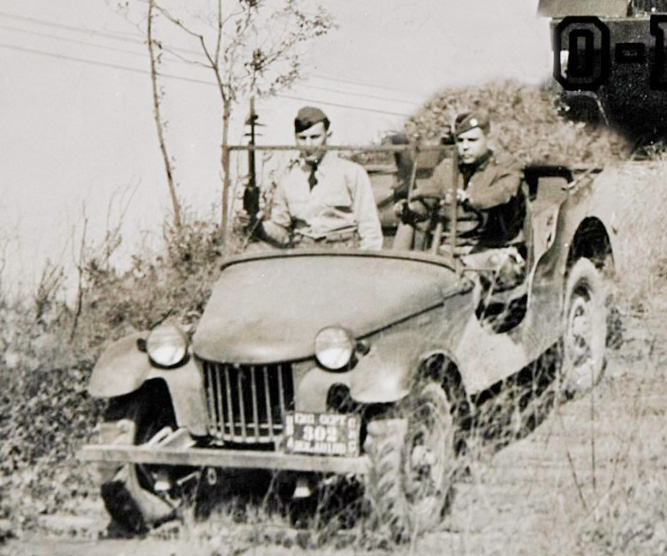Hugo & Fernando Vidal
Brazilian Hugo Vidal convinced his son Fernando, who lives in Florida, to join him on our journey to Alaska. Hugo, now 83, first drove the the Alaska Highway in 1955. He and two fellow Boy Scouts drove a CJ-3B from Brazil to New York, then to Alaska, before returning to Brazil. Their trip lasted a year and covered 72,000 kilometers. The trip’s story is summarized on the CJ-3B Page. Below, Hugo is pictured on the right.

The trip made a huge impact on Hugo, leading him to launch the four wheel drive company AVM in Brazil. Earlier this year, he was honored for his work in the offroad industry at Brazil’s national 4×4 Day.
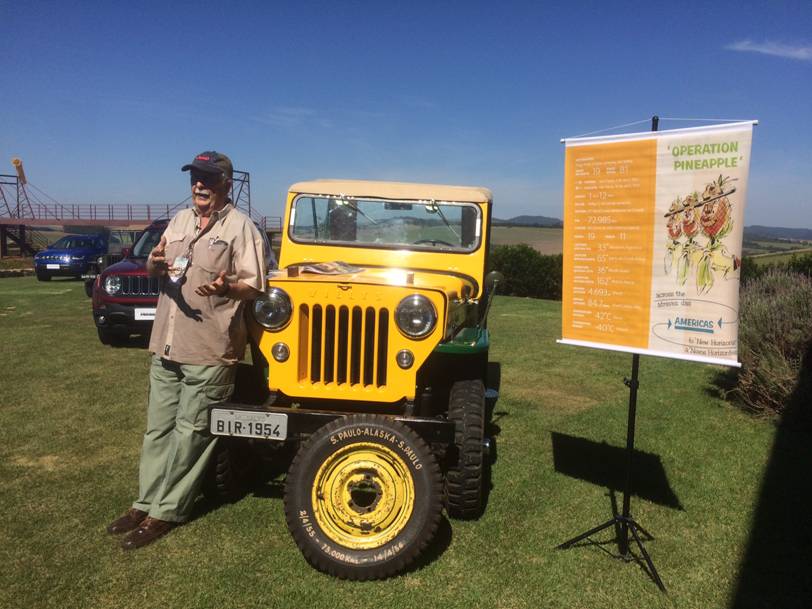
Hugo & Fernando are riding in a new Jeep Wrangler, courtesy of FCA.
Bill Reiss and His 1965 CJ-5 Dually
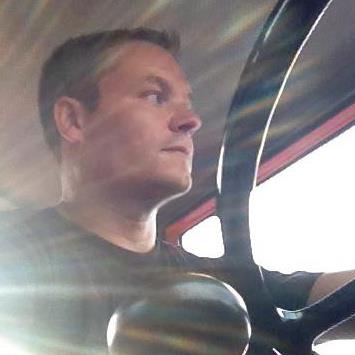 Bill Reiss is from Lancaster PA, and has spent nearly his entire career in the automotive world. For the past 20 years, he’s been jeeping all over the country, from the muddy trails in Maine to Moab’s red rock, the infamous Rubicon Trail and even Hawaii (if rental Jeeps count!). He’s worked extensively with a national tire retailer, he managed nationwide exotic car events with World Class Driving, and he owned a business of buying and selling collector cars & vintage Jeeps. Bill now works at a private race track, where some serious performance cars are driven at their limits… but his passion is antique Jeeps…. slightly less speed and handling, but way more fun. (Bill is the Eastern Group leader: Contact him at Bill@AlaskaOrRust.com)
Bill Reiss is from Lancaster PA, and has spent nearly his entire career in the automotive world. For the past 20 years, he’s been jeeping all over the country, from the muddy trails in Maine to Moab’s red rock, the infamous Rubicon Trail and even Hawaii (if rental Jeeps count!). He’s worked extensively with a national tire retailer, he managed nationwide exotic car events with World Class Driving, and he owned a business of buying and selling collector cars & vintage Jeeps. Bill now works at a private race track, where some serious performance cars are driven at their limits… but his passion is antique Jeeps…. slightly less speed and handling, but way more fun. (Bill is the Eastern Group leader: Contact him at Bill@AlaskaOrRust.com)
Bill holds a CDL license to drive tractor trailers and he loves long distance driving. So when the conversation came up about visiting his 50th state (Alaska), it was only natural to drive it in an old Jeep. The idea for this trip was started late that night in the garage while working on Jeeps with his friend, Henry Welch.

Pictured is Bill’s CJ-2A, it’s an all-original 1946 with almost 100k miles on it. On Bill’s Facebook page, www.facebook.com/LimeStreetCarriage, this Jeep is commonly referred to as “Norm”. After Norm was rescued from a barn in 2011, he’s been driven over 5k miles with just some basic maintenance.
Norm won’t be joining us on the trip to Alaska, instead Bill has a new project under construction based on a 1965 CJ-5 Go-for-Digger trencher conversion.
History of CJ-5s
In 1955, Willys Motors introduced the CJ-5, a model patterned after the M-38A1, a jeep that began production in 1952 exclusively for the military. The CJ-5 was advertised as a bigger, heavier, and more rugged utility vehicle. It offered a streamlined version of the classic WWII jeep, with additional comfort, larger windshield, longer springs, and form fitting seats. The CJ-5 went on to become the flagship model for nearly three decades.
The early CJ5 website is a great resource for CJ-5 information. Readers can also learn more about the CJ-5 at Wikipedia.
Go For Digger:
One of the aftermarket applications for early jeeps was the trencher. Go For Digger was a trencher manufactured by the Go For Digger Trenching Maching Company.
CJ-5s with the Go For Digger needed additional modifications to support the stress and weight of trenching. These jeeps commonly had dual rear wheels, an extended wheel well, and heavier duty rear springs.
Scott Gilbert and His 1953 Wagon
NOTE: Attending in spirit. The wagon’s engine gave out in Minot, ND. Bob Christy and Scott did their best, but finally succumbed.
Scott Gilbert is an attorney, army veteran and lifelong Jeep guy. He’s simply never been without one and found his first Willys in his neighborhood, a 1953 Willys-Overland Wagon. He went through it mechanically and was on the road in less than a year and quickly found a role in the major motion picture Carol and bit roles in other local films since. (As Midwest group leader, you can contact Scott at Scott@alaskaorrust.com)
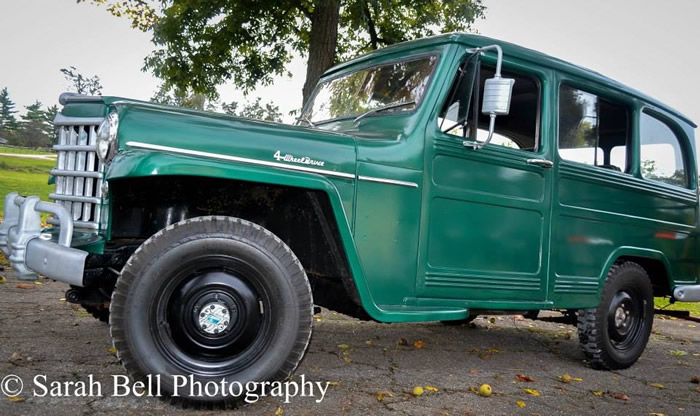
Scott now has advanced stage Willys issues. Not only is he getting his 1953 4×4 wagon ready for Alaska, but he is also working on a 1949 Jeepster restoration and a 1954 pickup. He’s always on the hunt for NOS parts (New Old Stock or original parts in like-new condition).
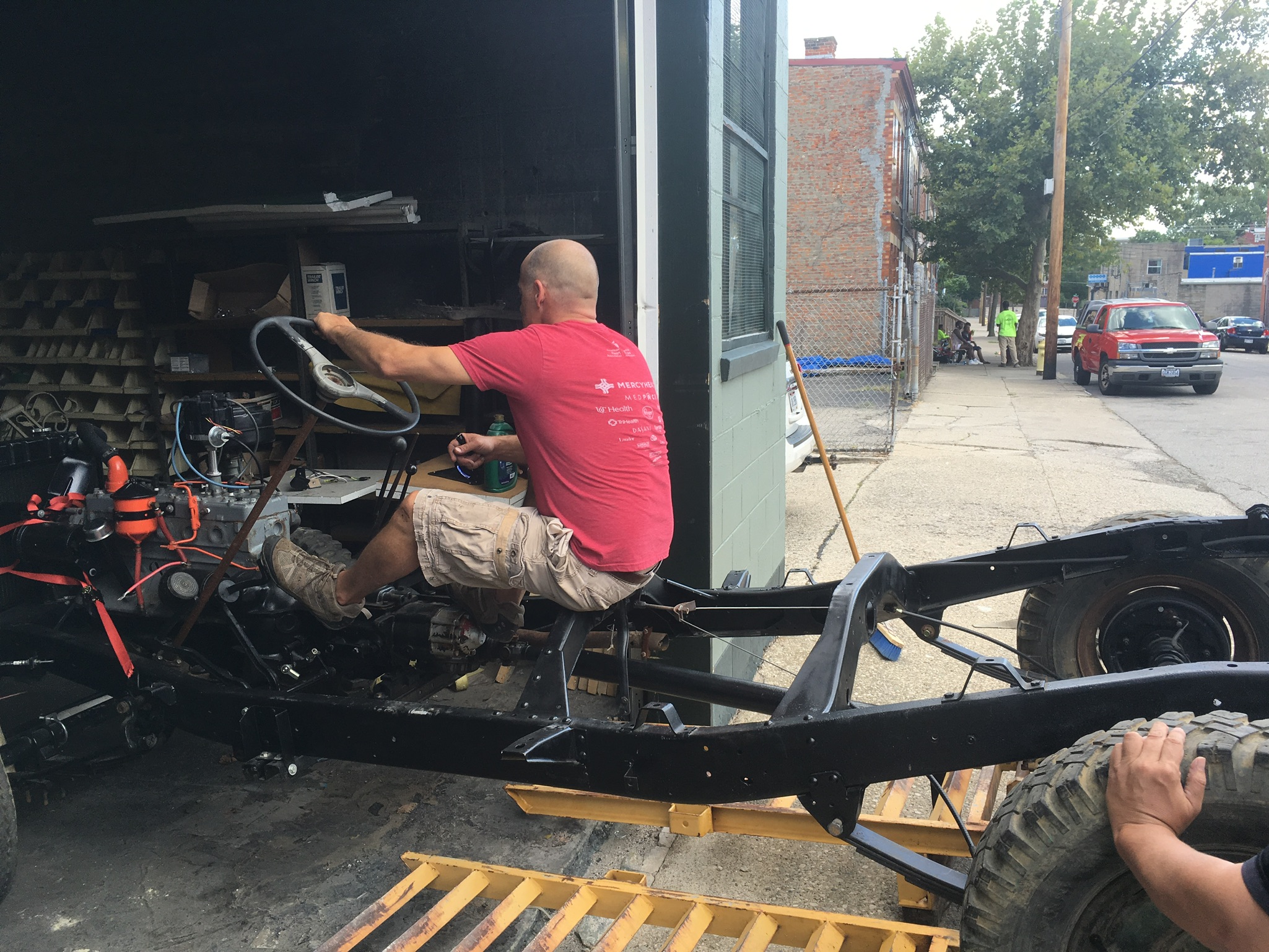
Scott notes, “I’ve always been drawn to Jeeps, the older I get, the older they get. I especially enjoy the satisfaction and immediate gratification of doing everything myself as I can always win with a Willys no matter the challenge, difficulty or breakdown, where my legal career and family life aren’t so predictable.”
Many consider the prototype of the modern SUV, with its flexible seating, added storage options, and offroad capabilities. Wagons were produced in a variety of models, including Sedans, Station Wagons, Delivery Wagons, Ambulances. Two and Four Wheel Drive options were available. Wagons were manufactured from 1946 to 1965 in the U.S., but continued longer internationally.
Wagons sales were directed solely at males. This advertisement argued that wagons were easy to park in tight spaces for everyone.
The Old Willys Forum is great for asking questions and learning more about Willys Wagons. Richard Grover’s website has information and numerous photos of wagons and trucks. There is also information about Wagons on Wikipedia.
Merlin and Brittany Hanson & Mortimer, a Slat Grille MB
 Merlin: Merlin is the Middle School Librarian at Boys Latin School of Baltimore and has taught library and History for nearly 20 years. His passion for antique vehicles began in childhood as he grew up on stories of his father’s first car, a very battered 1956 Porsche that sat in the garage and that his father still owns. Merlin began working on vintage VW’s in high school and met his Willys MB in 1995 and thus began the love affair with vintage Jeeps. Merlin purchased the Willys MB in 2000 and within a few years was repairing vintage jeeps for friends and customers. Merlin and his wife, Brittany, run Hanson Mechanical Restorations, a vintage Jeep restoration shop.
Merlin: Merlin is the Middle School Librarian at Boys Latin School of Baltimore and has taught library and History for nearly 20 years. His passion for antique vehicles began in childhood as he grew up on stories of his father’s first car, a very battered 1956 Porsche that sat in the garage and that his father still owns. Merlin began working on vintage VW’s in high school and met his Willys MB in 1995 and thus began the love affair with vintage Jeeps. Merlin purchased the Willys MB in 2000 and within a few years was repairing vintage jeeps for friends and customers. Merlin and his wife, Brittany, run Hanson Mechanical Restorations, a vintage Jeep restoration shop.
Brittany: Brittany wears as many hats as Merlin. She restores Jeeps and manages paperwork at Hanson Mechanical, works a security job, and takes classes. Brittany draws part of her love for vehicles from the auto shop her great grandfather ran when she was little. Her great grandmother even raced a 1950s Chevrolet. Amongst her personal projects are working on her 1993 XJ, her 1963 Yamaha motorcycle and prodding Merlin to fix her cantankerous 1948 Francis Barnett motorcycle.
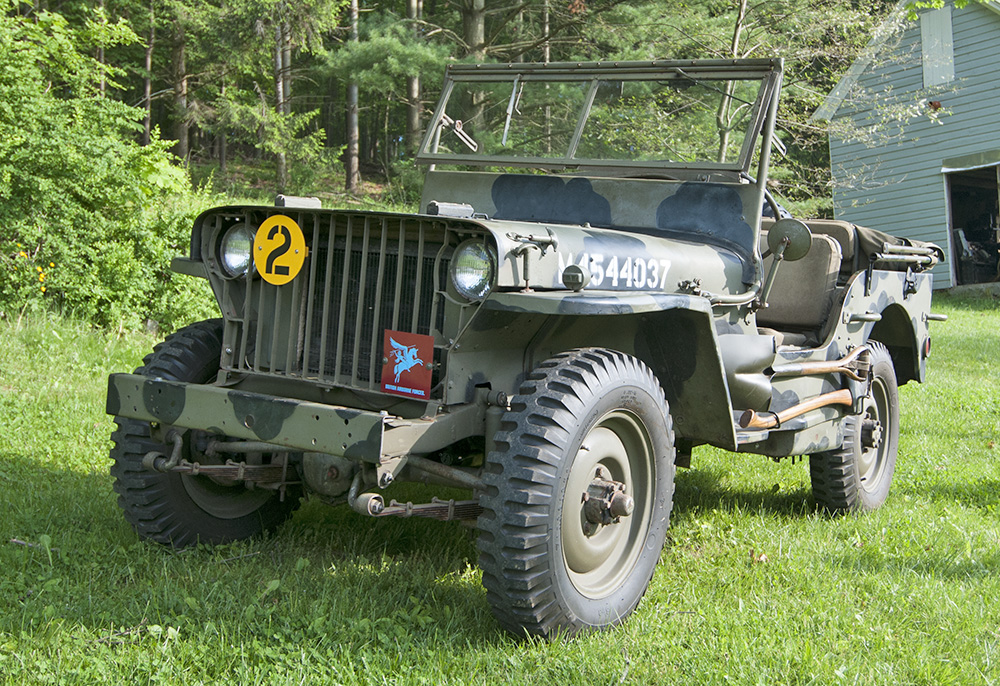
Mortimer: Mortimer is their Slat Grille MB, one of the earliest type of Willys-Overland MBs produced. It belonged to Merlin’s friend, Scott, whom he first met in 1995. The Jeep was Scott’s first car. Merlin drove it to work in state parks during the late 1990s, then bought it from Scott in 2000.
Merlin says he’s drawn to jeeps in a similar way that he is drawn to vintage VW’s in that they are simply and solidly engineered, which allows the average person to repair one. The history of the Jeep, a surprisingly complicated one, is also a big draw for him. He often takes Mortimer to Honor Flight dinners to meet with WW2 veterans. The old men are always delighted whenever they see an old jeep as if it was an old pal. Brittany and I also take the Jeep to WW2 living history events, airshows and convoys to teach the public about WW2 history. In addition to our Willys MB, we own a 1950 Cj-3A, which was converted into a small truck, a 1993 Cherokee XJ, and a 2013 JKU, which we use to tow the MB to offroad adventures.
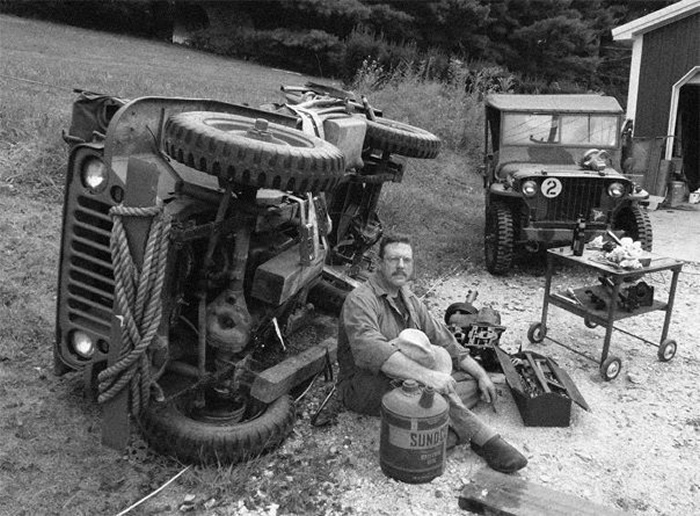
In fact, adventure is the reason Merlin and Brittany want to go to Alaska. They feel it is a way to step back in time, to the early days of automobiles, when men and women drove cars across the country to show vehicle endurance, to have a unique experience, to see how far they could push themselves, and to go to a place they’ve never been. The drive, the camaraderie, and the experience of a lifetime is the primary reason why Brittany and Merlin are going.
There is, however, a secondary decision for going. Mortimer will be equipped with a new engine block, one Allied Jeeps plans to produce. Alaska is an opportunity to prove the engine’s endurance and performance. It’s a great opportunity for them and Mortimer to show what the new engine block can do.
WW2 JEEPS — THE WILLYS MB & FORD GPW:
Few people know that the original 1/4 ton reconnaissance vehicle, what we know as the jeep, was actually built by the American Bantam Company in the summer of 1940. It was a hand made, cobbled-together project that was good enough to win the Army Quartermaster’s approval in the fall of 1940. The photo below shows the Bantam BRC. It is identifiable by the curved fenders and the curved grille coupled with the curved, sloping hood:
Over the following year three companies — American Bantam, Willys Overland, and Ford — built prototypes for the Army to test.
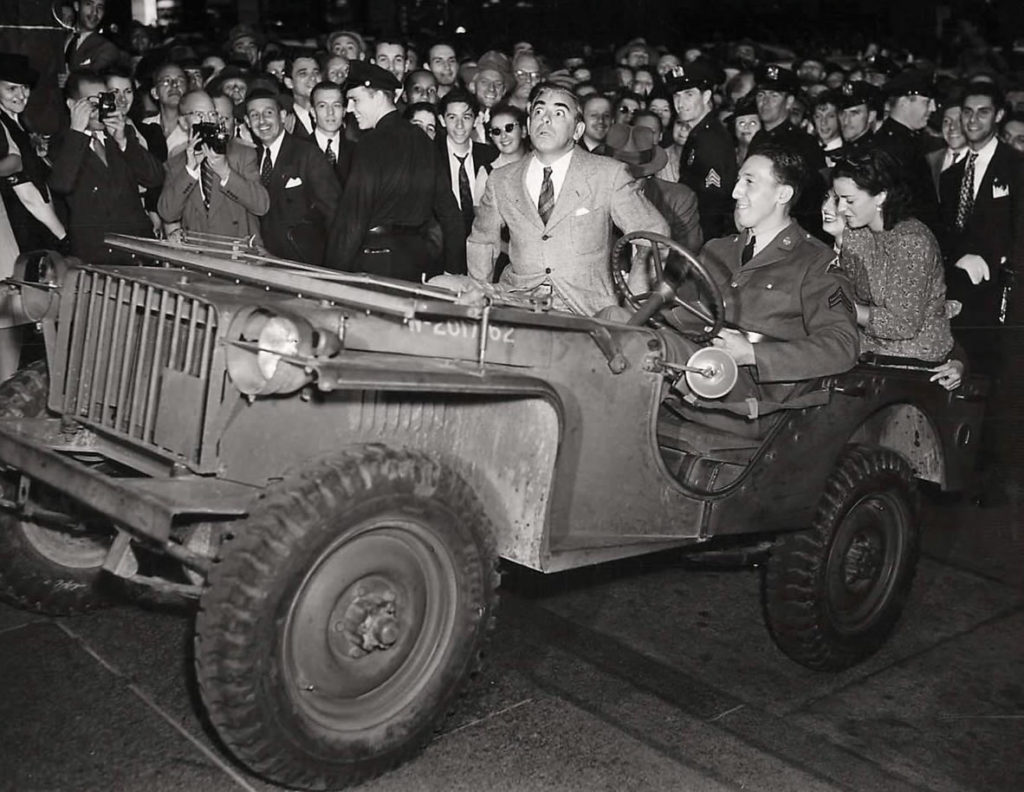
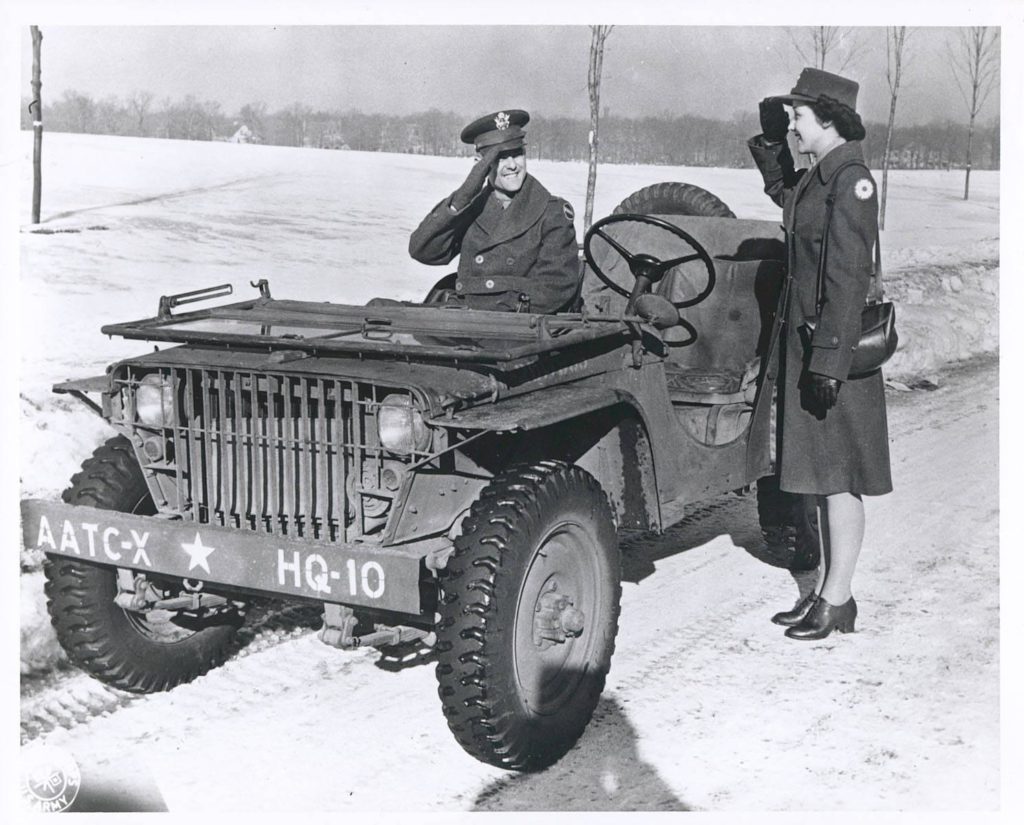
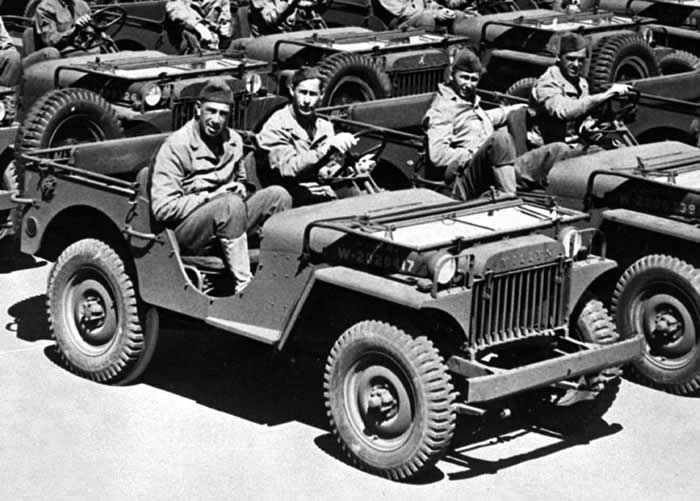
In the fall of 1941, the Army eventually awarded the contract for producing jeeps to Willys Overland, with Ford acting as a second source. Willys Overland built a model called the MB, while Ford produced a model called the GPW. Between Willys and Ford (and Bantam), nearly 650,000 WW2 jeeps were produced between 1940 and 1945.
The reason Mortimer is called a “Slat Grille” MB is because the first 25,000 jeeps produced by Willys Overland had metal bar grilles. After that, Willys adopted a ford stamped design, which became the classic face of the WW2 jeep.








